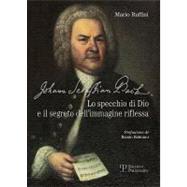Johann Sebastian Bach : Lo Specchio Di Dio e il Segreto Dell'immagine Riflessa
, by Ruffini, Mario- ISBN: 9788859610618 | 8859610613
- Cover: Paperback
- Copyright: 7/17/2012
God chose music to measure time because music is time, and Johann Sebastian Bach became its most perfect measurer. Bach chose music in order to speak with God. Their dialogue unfolds through coded language and secrets that find in the number 14 and in the name B.A.C.H. the method of communication between mankind and divinity. The Kantor maximus of proverbial rigour can be surprising: he is, in fact, the composer of diametrically opposed works, a composer with extreme compositional diversity. Some of his works codify ruthlessly rigorous procedures that reveal his speculative, geometric, and architectonic genius (Musical Offering, The Goldberg Variations, Enigma Canon, The Art of the Fugue). Other, instead, are characterized by absolute inventive freedom (Chromatic Fantasy, the Preludes for The Well-Tempered Clavier, the Concerts). And then there is the religious Bach (Cantatas, Oratorios, Passions, Masses), set against the secular Bach (Secular Cantatas). And then the Lutheran Bach of the Chorals, and the Bach who dedicates his Mass in B minor to the Catholic King of Poland, Fredrick Augustus. There is the vocal Bach and the instrumental one, the canonic Bach and the playful one of the Quodlibet. The Bach of the Preludes and Fugues from The Well-Tempered Clavier unites soul and body and joins freedom and rigour in an indissoluble bond. Bach is one and the other thing. And then there is the seductive Kantor, the one of the Suites, that turn out to be the true dancing parliament of eighteenth-century united Europe. Lastly, there is the secret Bach who speaks with the Supreme Being through symbols and numbers and who, surprisingly, entrusts the musical message of his Enigma Canon to the figurative arts. It's a great play of mirrors: in the secret numbers of the princeps musicae there is, perhaps, the proof for the existence of God.Bach's history also runs through the phases of an equally enigmatic relationship with Georg Friedrich Handel, from whom he takes a chacone bass in order to compose the very famous Aria that will first be inserted into the Klavierbuchlein fur Anna Magdalena (1722-1725), then used to open the Goldberg Variations BWV 988 (1741-1742), then re-used as the basis for the Fourteen Canons BWV 1087 (1742-1746), and finally written out in the music sheet held by Bach in the portrait by Haussman (1746).These are the topics discussed in this volume of Bach's musical theology; a scholarly and narrative volume that proposes a new musicological attribution. The work is 114 pages long, laid out in 14 chapters, and contains 14 boxes of thematic analyses.






